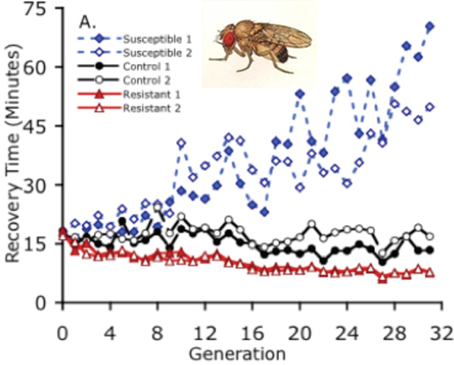Physiological and biochemical architecture of cold tolerance in Drosophila
melanogaster
We are using Drosophila
melanogaster as a model to integrate the study of physiological
and genetic mechanisms to identify alleles with strong influences on
cold tolerance. Cold tolerance is an ecologically important trait that
varies within and among populations and species, and will impact
organisms response to climate change. To look for genes with strong
influences on cold tolerance, we use the Drosophila Genetic Reference
Panel, which is composed of 192 fully genome-sequenced lines
representing the full spectrum of naturally-segregating cold
tolerance, derived form a wild-caught population in Raleigh, North
Carolina (Mackay et al. 2012 Nature). Complementing these lines, our
collaborator Dr.
Ted
Morgan has generated replicate lines selected for either high
or low cold tolerance, derived from a genetically heterogenous base
population.We can then test whether metabolic phenotypes associated
with cold tolerance are congruent between the lines representing the
tails of the distribution of naturally-segregating variation, and
the selected lines, and whether the underlying genetic architecture
of those traits is also conserved.
